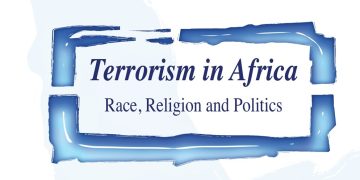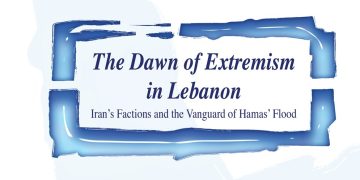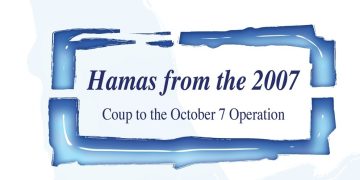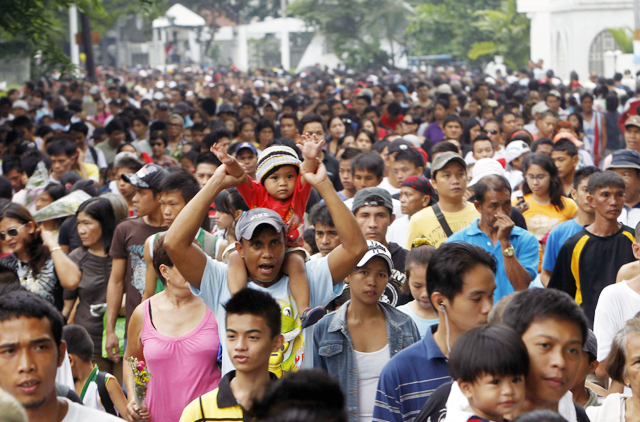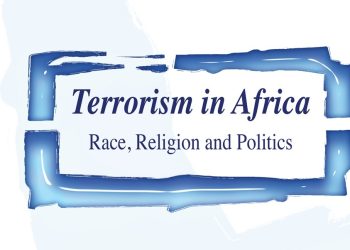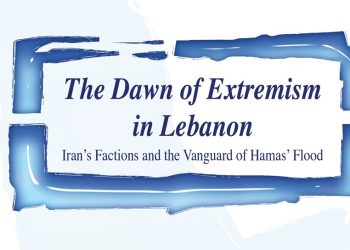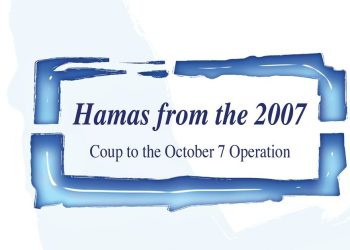ABSTRACT
Radical groups operating in Asia in general and Southeast Asia in particular is not completely a new phenomenon, what appears to be new is the shift that has been seen in the past few years where women and even children tend to be seen taking active part in radical groups. Until a few decades ago, only Marxist and other radical groups were seen showing the flexibility of recruiting women and children to their ranks. The recruitment of Muslim women by terrorists and radical groups has not been common phenomenon until the world has seen the rise of Islamic State in Syria and Iraq. Even Al-Qaeda, Taliban and other terrorist groups before Islamic State were not known for recruiting women.
Radical groups operating in Southeast Asia in particular were known for recruiting women for organized violence against state. The Sri Lanka based LTTE is one of the biggest examples where Tamil women were recruited in large numbers. On the other hand, the Muslim radical groups in the region are not necessarily a copy of Al-Qaeda or the ISIS etc. The Southeast Asian Muslim radical groups have their own history and have improvised their tactics in advancing their agenda. It is in these radical groups where women and children are showing their involvement in large numbers, say, as women suicide bombers, child soldiers in Philippines, Indonesia or other Southeast Asian countries.
The questions which arise are how we should explain this phenomenon? does it mean that Islamic radical groups have also changed their tactics, or on the contrary, they have come to philosophical transformation? does this show that women are becoming more interested in international affairs or in politics of their country? in a way by showing their participation in radical groups, are they trying to affirm their own agencies or their own independence? the answers to these questions are multifaceted ones, in some cases it indicates that political and ideological causes give rise to active participation of women as well as children in the radicalization at large, else they are doing it at very traditional reasons in society, where for instance revenge is very important in order to restore the family’s honor. There is no obvious answer to all the notions prevailing as its totally a new phenomenon. However, when it comes to the question of Muslim women, it is not easy for Muslim Society to see Muslim women becoming part of politics, let alone be the part o f violent radical groups. There must be some changes within the tactical side of the recruiting groups or within the way of thinking of the recruited women that this change is being seen in the region’s active groups.
This paper analyses how Muslim women and children became part of organized violent groups, radical and terrorist groups. It will also look into the intellectual and social underpinnings that facilitate radicalization inside the family institutions. It will also look into the social and political debates going on in the region pertaining to the role of Muslim women vis-a-vis the issues used by radical groups in the region, such as the separatist movements in Philippines, Thailand, or the Islamization movement of Jamah Islamia of Indonesia and so on. It is not important how many women and children are actually being recruited by these groups, their openness for using women even at nonviolent radical platforms are also important to underline.
Key words: South-East Asia, Terrorism, Al-Qaida, ISIS, Radical Islam
About the Author:
Dr. Sumaiyah Ahmed is Assistant Professor in the School of Humanities and Social Sciences, Jamia Hamdard, Delhi, India. Her expertise includes the socio-Islamic discourses on women’s status and roles in the Muslim societies. She holds a PhD from the School of International Studies, Jawaharlal Nehru University, Delhi, India and her M.Phil dissertation and PhD thesis have discussed Muslim women in Islamic movements and Muslim women’s education and empowerment respectively. She has been a keen learner of different languages and knows English, Hindi, Arabic and Urdu. She has published several papers in journals and edited volumes and participated in several conferences in India, United Kingdom, Oman, Tunisia and Turkey.
INTRODUCTION
Southeast Asia has experienced various forms of extremism and violence for years and with a growing demand for academic or policy-relevant work regarding this situation, it may provide a better explanation that will enhance understanding of the reasons behind this. The violent challenges in this area have taken a variety of forms like the presence of international terrorist movements. Indonesia, Philippines, Malaysia, Myanmar, Thailand, Singapore are some of the Southeast Asian countries witnessing extremist groups where women as well as children are employed in spreading varied radical groups, but each of the above countries have unique participation of women and children.
According to the factsheet of World Population Review (2019)[1], the latest demography of this region constitutes about 662,011,806 people among whom the sex ratio of females is slightly above the males constituting 49.9 percent males and 50.1 percent females. Slightly above 40 percent adhere to Islam due to which it can be said that the major religious community among the Southeastern population is Muslim. So Islamic activism in the form of Islamic movements or radical Muslim groups is given greater importance in recent decades in this region and this phenomenon is perceived by different people with different names, various adjectives and distinct phrases like Islamic fundamentalism, radical Islam, Islamism, Islamic movements, Islamic activism or sometimes religious terrorism etc. However, one cannot undermine the other radical and extremist groups in the region and the response of each group towards the recruitment of women and children into the active cells of the groups.
Southeast Asia is working hard for the prosperity of the region as the shifts in international policy statements can be marked. Singapore, Malaysia, and the Philippines are becoming the tourist hubs and tourism is attracting foreign investments from all over the world. The OECD 2019 report[2] has remarked how Southeast Asia has significantly demonstrated its expansion in economy as well as its economic stability. Moreover, since the region also has steady demographic growth so it is becoming the attraction of global investment to tap into the healthy, trained and young labor market with 662 million population. Yet, this region is facing some of the challenges related to the ideological and religious bases where recruitment into the radical and extremist groups has become a great matter of concern.
The terrorism threat in Southeast Asia particularly reached new heights after the incident of Marawi city siege which took place in 2017 by ISIS[3]. Infact, until the Soviet-Afghan war till 1989, the relationship between Southeast Asian Islam and extremism was given little attention, however, since early 1990s the Islamic political activism with Salafi-Wahabi character in ASEAN countries kept rising, as a result, this cultural and ideological shift has threatened the moderate teachings of Islam that have already existed in Southeast Asia as the majority of Muslims living in this region are Sunni Muslims, following the moderate teachings of the Shafi’i school of jurisprudence[4].
The involvement of women and children in armed forces of terrorism and extremist organizations is not uncommon phenomenon to the millennium era as Gentry and Sjoberg have noted; it has happened to most of the terrorist groups in all regions.[5] They have recorded various terrorist organizations that women are involved with, which include the Tamil Tigers of Eelam in Sri Lanka, Kurdistan Workers Party in Turkey, Hamas in Palestine, Zapatista in Mexico, Abu Sayyaf in the Philippines, the Taliban in Afghanistan and many others. It can be captured throughout history that the involvement of women in violent groups is increasing, performing strategic, supportive and even combat roles in a wide range of violent movements.[6]
According to Havlicek (2015), in the report of the Institute of Strategic Dialogue, among 4000 people migrated to Syria and Iraq during a year, as many as 550 women from different educational, ethinic and family backgrounds moved from their native places to Syria and Iraq to join the radical groups. Among these women, 56 percent are married with most to foreign fighters with similar nationality. 30 percent of them are widowed and at least 13 percent of them have children, their ages range from 14 to 46 years old, with the majority group between 15 to 25 years old.[7] However, synchronising this report with other available contents regarding the inclusion or rather recruitment of women into radical groups, it can be understood that these numbers must be multiplying quickly owing to the determined propaganda through social media which has affected many young girls and women to support the extremist groups in any possible way.
There are two dimensions of women who are exposed to the extremist and militant groups; firstly, women are victims of war who suffer at the maximum; secondly, the new face of women can be seen in the recruitment of them as perpetrators of war and violence, showing their dynamic multiple roles[8]. In the context of Southeast Asia, there are evidences which suggest that women from Indonesia, Malaysia, Philippines and Singapore have been contributing actively in ISIS as it has increased its female-focused efforts, which include writing treatise directly for women which is prepared by al-Khansaa Brigade, the female wing of ISIS. It also allows women to have voices within their capacity, recruiting via social media and even propagandizing. They call other women to join their causes. Women also are valued, not as sexual objects, but as mothers to the next generation and guardians of the ISIS ideology.
Although it is believed popularly that women were forced into terrorism by men but Christine Sixta has opposite view, she states that women are more willing to engage in terrorism, rather than being forced into terrorism.[9] She agrees that the increasing threat of women terrorists can be recognized properly by understanding “women as rational actors as opposed to emotional reactors of violence”. Infact, most of the women who join in terrorist activities chose terrorism as a tool of political participation, and as a way to fight for their gender struggle. By using violence to achieve equality, women terrorists have become militant feminists. Women who participate in suicide bombings believed it to be socially acceptable way to contribute to their family income. Female suicide bombers would receive amount of money for every mission and it would be sent to their families. They also thought that they would be recognized as heroines who inspire others. According to the above mentioned facts, it can be articulated that what causes women to be radicalized, may not be so different from men.
When it comes to the question of the recruitment of children into radical and extremist groups, the factors and causes radicalising the minds of children are not much different from that of adult men and women. The young minds are exposed to the radical teachings in the young nurturing age through education of radical contents provided by the local schools operated by the militant groups. These teachings ideologically have deep rooted effects on children throughout their lives. Apart from the external educational institutions, the militant mothers, fathers or relatives of the children have kinship advantages to turn children into child militants. Revenge can also be a factor for child militants to stand against the atrocities of the State by joining the rebel groups of their area, for instance, the example of children joining Papua rebels in Indonesia against the long-running conflict of rebels with the state which motivated the state to organise a military crackdown on separatist rebels in the province of West Papua in Indonesia.
INDONESIA
Indonesia has the largest Muslim population, not only in Southeast Asia but also it maintains first position in the entire world. According to the National census 2010, the population of Indonesia was about 238 million among whom almost 87.18 percent of Indonesians declare themselves Muslim. The radical and extremist groups operating in Indonesia are largely the by-product of Al-Qaeda or ISIS. The terrorist attacks by the biggest radical group of Indonesia, the Jemaah Islamiyah (JI) on Bali had set a record of the beginning of the terrorist activities of JI in modern times within Indonesia and outside to the world. It exposed the vulnerability of Southeast Asia to the terror groups. The JI had already spread its networks beyond Indonesia, mainly in Malaysia, Philippines and Singapore. Counter to the ideological leaders of JI affiliated to Al-Qaeda, Indonesia has seen the emergence of ISIS in this region in present times which has not only strongly impacted Indonesia’s other radical groups but also women, children and youth alike. It has growingly becoming the new ideological voice of radical Indonesians.
The radical and extremist groups adhering to the ideological framework of ISIS are gaining more popularity in Indonesia among women and children; firstly, because of the pragmatic approach of the group towards the position of the participation of the women in the great Jihad; secondly, because it is using the modern tactics of utilising the popular media to attract the youth of the nation states. Unlike Al-Qaeda (AQ) and its ideological framework which argues that women are not allowed to be part of the tactical team or to be present on the battlefield, unless they are involved in defending their rights and territory, the ISIS allows women to participate in offensive combat operations as well as in defensive activities[10]. The composition and range of activities of women are reportedly conducted by the Al-Khansaa Brigade (ISIS’ female wing) which demonstrates the expansive roles that some female ISIS members occupy. The Al-Khansa Brigade was formed in early 2014 which works as women’s religious enforcement unit or “moral police” with the backing of ISIS[11]. The Al-Khansaa Brigade serves as a model for ISIS female fighters all over the world, including female fighters from Southeast Asia.
A socio-religious demography of Muslim women in Indonesia depicts that firstly, women are on the same footing with men in terms of population, secondly, Indonesian women have been well educated and active participants of their social sphere and are politically active and sensitive towards religious as well as feminist movements, and thirdly, they are in general progressive hence, they are not ruled by the same patriarchal values as followed by Arab or Afghan societies. Historically, in Indonesia, active role of females in terrorist groups in wars and in the conflict zones, both at the strategic and tactical levels is seen showing change in stereotype. Defining the roles of female Jihadists, Rahmah (2016) mentions “Not only do they “supply” brides for men in jihadists groups, they also proudly take a position in maintaining the movements’ secrecy. In addition, they provide food and logistical supplies for fighters. And these women routinely undergo physical training in order to prepare for the eventuality that they might have to defend their territory against the enemy.”
Indonesian female radicals are also involved in preparing one of the most important brigades for the armies of the radical and extremist groups and this is the league of child soldiers along with female members. The indoctrination of radical parents or extremist mothers or fundamentalist family members have great impact on the minds of young children and this impact plays great on the psychology of child soldiers who are recruited into groups and movements through families as well as societies’ other greater forces. For instance, female jihadists in Indonesia have played various roles during the conflicts in Maluku and Poso from 1998 to 2002, they provided ammunition, homemade explosives, and logistical supplies for jihadists but their most important contribution was to provide local fighters including small children. After the conflict, they played more of a strategic role which is engaging in religious preaching, nurturing the minds of young particularly boys, education, recruitment and charitable activities[12].
Al Qaeda and ISIS are persistent supporters of social media. Radicalization often leads to recruitment and in most cases, there are primary modes offering assistance to those who have intentions to be a fighter, be it a man or a woman or a child [13]. With the access of social networking sites, the role of female Indonesian extremists has become very special in today’s time. On social sites like Facebook or Telegram, women displayed operating roles in spreading violence. There are various examples assessing this aspect like, a maid namely, Ika Puspitasari, a radicalised Indonesian, took aid of technology who was radicalized online and had chosen a husband from her Pro-Daesh Telegram group in 2015, with an aim to provide financial assistance, she took a terrorist operation back home[14]. For the fulfillment of the financial objectives she identified talented bomb-makers through Facebook and Telegram. She then formulated a certain Telegram group to discuss money transfer and attack planning with her recruits, but her plans failed when her husband was arrested.
Marriages are the most important linkage to attract the female extremists and the male radicals of the extremist groups towards each other. The cross border marriages bring the potential terrorists across the world to be linked with Southeast Asia when they get married to the Indonesian women or vice-versa[15]. The classic example of the powerful linkage of marriages with spreading the terrorist activities is of Bahrun Naim who is the Indonesian IS leader and who has two wives Rafiqa Hanum and Sri Lestari. Both of them migrated with the IS leader to Syria and nurturing their family and kids in ISIS. Both the women are found to be promoting the significance of living in Syria through social media. Hanum and Lestari thus form part of the backbone of Naim’s ISIS Southeast Asian leadership, attracting other females and males to migrate to Syria[16]. Some radical Muslims from other countries are also attracted towards Indonesian women for their quality of fundraising potential as they play a strategic role in fundraising for the extremist groups. Whereas, in some other cases, female members of families were indoctrinated by their participation in radical study circles and influenced their families to migrate from Indonesia to Syria. For example, Six Indonesian women suspected of being affiliated with ISIS were arrested by Turkish authorities on November 14, 2015 as they attempted to enter Syria.[17]
Since women of the Islamic State are encouraged to actively participate in weapons training, so female soldiers were found being trained to fight against police by the Eastern Indonesian Mujahidin (one of the Indonesian terrorist organizations affiliated to the Islamic State) commanded by Santoso since 2015. Some of Santoso’s women soldiers had not only undergone weapons training, but they had also been directly involved in the fight against the police[18]. The high spirited appeal of radical groups to Indonesian women to wage holy war Jihad with their willingness against the authorities opposite to the IS and the role of Indonesian women played in all of it as sympathisers, fundraisers, combat fighters and suicide bombers, demonstrates the powerful indoctrination of ISIS and its success in moulding the mindsets of the people for radicalisation. Despite the fact that radical Indonesian female fighters sometimes are overshadowed by charismatic male leaders, there are several women who want to keep the struggle going on until they attain a status that is equal to their counterparts and feel it to be a determining duty to remove the social inequality and injustice as Marcoes (2015) observed[19].
One of the most depressing radical act, the suicide bombings, had been in the list of the highest goal to be achieved, which is attempted by many radical Indonesian women. In 2016, the appearance of the first Indonesian female would-be bomber, Dian Yulia Novi, who married to M. Nur Solihin, a member of militant cell motivated by ISIS was not only shocking to the state but all around the world. Apart from this, radical Indonesian women believing that their success in raising their children to be mujahidin (male fighters) and mujahidat (female fighters) can reward them best in heaven apart from their own being Mujahidah or Shahidah (female fighter or female martyr) had led them to include children into the Jihad (holy war). Therefore, it is not surprising to know that bombings in Indonesia are beginning to involve women and children alike. The perpetrators of the bombings of the series of blasts of three churches in Surabaya were PujiKuswati, DitaOepriarto and their four kids, who were all killed, along with 12 church visitors. Next day, Tri Murtiono, Tri Ernawati and their three kids blasted themselves up at Surabaya police headquarters[20]. Since terrorism has long regarded as the exclusive male domain, but it has changed now as female participation has become a well known fact to the world which is also effecting the involvement of children and young into combat fights, hence the de-radicalization process also needs to involve more women to reverse the radical indoctrination of the minds. The strategists working for this cause may articulate strategies which may involve women to give better results.
MALAYSIA
Another country in Southeast Asia which has tied up with the activities of extremists and radicals and has been facing the new front of terror opened by women is the mighty Malaysia. It has been in the news and reports that many Malaysian women, from various age, marital status and background have become radicalized and have been joining the extremist groups within the premises of the country as well as out of the borders. As in Indonesia, Malaysian women are also influencing the minds of young children and adolescents to join the radical groups as well as play the grassroot level activities so that they are less suspected by the authorities. Malaysia has a unique cultural background where multi religious, multi cultural, multi lingual and multi ethnic people have been living with peaceful co-existence. Malaysia’s population according to the 2010 National census, is about 28 million people. Though the official religion of Malaysia is Islam as above 60 percent of Malaysian people practise Islam but there are other important divisions including Christians, Buddhists, Chinese, Hindus and etc. When most of the Southeast Asian countries were struggling for stability and independence, Malaysia worked hard on its economic growth and development due to which the counter state militant insurgencies by radicals and extremists is unknown in Malaysia. However, the threat of terrorism in Malaysia continues to pose serious challenge as autorities are struggling with the radicalization of the Malaysian youth particularly women and children[21].
Among the local extremist groups in Malaysia, the Darul Islam Malaysia and the Kumpulan Mujahideen Malaysia are obsolete at present and the Al-Ma’unah group is defeated and disolved succesfully by counter terrorist agencies of Malaysia. But there are several other foreign players in the region who are posing to be terrorist groups in the Malaysian land. Few of the famous ones among these groups to be named are Al-Qaeda, ISIS, Abu Sayyaf and Jemah al-Islamiya which are activated in Malaysia as both recruiters and predators. Women are attracted in large numbers towards the foreign groups and are extensively getting in contact with the rebels and extremists by using the social media sights and getting influenced by the extremist propaganda available on the world wide web. Daily news reports show how women have been proceeding with the terrorist groups’ literature and changing their mindsets and joining the most famous Islamic State. On the one hand, Malaysian women indoctrinated their minds and started supporting the rebels on multiple fronts as being supporters, preachers and frontliners of the group’s activities within the borders of Malaysia; whereas, on the other hand, few women have succeeded moving to Syria and Iraq. The Malaysian government under various counter terrorism acts such as Security Offences (Security Measures) Act 2012 (SOSMA), Prevention Of Terrorism Act 2015 (POTA) and National Security Council Act 2016 (NSCA) has been successfully holding back the suspected terrorists and terrorists activities.
It is not necessary that Malaysian women who are engaged in ISIS have any family members joining in militant activities or terrorism, they can become radicalized, in many ways including interaction with friends, teachers and community (Havlicek, 2015). There are various reasons for their radicalization like many of them seek the blessings from Allah by marrying jihadists or they also seek to purify their previous sins. Some women have other motivations to join ISIS, for example, as a tool of emancipation and empowerment of women compared to their male counterparts as when women join the groups, they recruit, lead, propagate and raise funds, without men’s command.
There is a list of activities of Malaysian women which throws the light on the engagement of women in the radical and extremist groups:
- It was reported that in 2013, there were three Malaysian women in the age group of 30s and 40s who migrated to the Middle East to marry jihadists[22].
- In 2014, it was reported that a housewife and a widow were arrested in Malaysia for recruiting Malaysians for joining ISIS. It was reported that commonly recruitment was carried out by the men, but now women are also taking that role due to their changing roles[23].
- During October 2014, Assistant Credit Control officer, Ummi Kalsom Bahak, was arrested at the Kuala Lumpur (KL) International Airport. There was planning to marry an ISIS member, Aqif Husin Rahaiza. She believed that being a wife to a jihadi is the glorious blessing a wife can get[24].
- In 2014, a university student who was majoring in Islamic studies (Quran and Sunnah), Syamimi Faiqah Sulaiman, stop her studies because of poor academic performance, said to be ready to go to Syria. She had a public online diary which revealed that she was motivated and had the intention to join ISIS.[25] This 27years old female university dropout was also arrested at KL International Airport in 2015 while she was checking in to Istanbul. She was married with a Morrocan IS jihadist over Skype and planned to unite with her husband there.[26]
- In the middle of 2017, it was reported that 20 Malaysian women were transited in Turkey trying to cross to Syria and Iraq to marry their jihadist lovers[27].
- The Malaysian police reported an incident in 2018 that the arrest of a female suspect who allegedly planned an attack near Kuala Lumpur on Election Day marks the first time a woman assumed a lone-wolf role in a terror plot in Malaysia linked to the Islamic State (IS). In Malaysia, about 400 people, including 43 women, have been arrested in recent years on suspicion of being involved with IS[28].
- A news published very recently on 26th September 2019 reported that Malaysia arrests 16 suspected ISIS militants, some planning attacks on politicians and non-Muslims. What makes this news more grave is the involvement of women and children among those who arrested[29].
These above mentioned facts and news with several other developments throw light on the willingness of Malaysian women to join the Jihadist activities. Several incidents of female radical activities go parallel with Malaysian women’s thoughtful ideas of finding suitable partners who are more supportive of their mission.
Since Malaysia has been one of the most economically developed countries of the Southeast Asian region, hence, it has not left any stone unturned to counter terrorism mechanisms in the region effectively. Cooperation with regional and international actors was enforced to keep an eye and neutralize threats from ISIS allowing the authorities to use preemptive measures against suspected terrorists. “Restrictions and conditions” on suspects were applied by watching their internet activities and social media behaviour [30]. Among important measures Malaysia undertook to stop the infiltration of ISIS was the introduction of the concept of moderation (Wasatiyyah)[31] introduced by Malaysian government to counter terrorism. It means that the agenda of the counter-narratives should also be referred to the principles and teaching of Islam based on Quran and Sunnah. All these measures which are taken, keep Malaysia well prepared for the unusual terrorist activities and also help in deradicalisation of the indoctrinated minds by the propaganda of radical and extremist groups. It certainly impacted Malaysian women as women are actively participating in providing support in deradicalization process of the victims. Individual radical activities of women are still continuing, however, mass level involvement in extremist groups is not common at present, perhaps because of the strong measures taken against the suspects.
PHILIPPINES
Philippines is a country with a demography of about 100 million people among whom above 80 percent are Christians, about 5.6 percent practice Islam and rest belong to different other religious communities including Hindus, Evangelists etc. Despite having a minority group of Muslims in the country, the state aggression against the Muslim community is classical in Philippines as its roots goback deep into the historical evolution of both the communities and their ages back rivalry. The repression of Muslim minorities, after the American forces left the Philippines in 1946, led to the emergence of militant and radical groups in the country who came into direct confrontation against the State[32]. The Moro Islamic Liberation Front (MILF), the Abu Sayyaf Group (ASG) and Raja Suleiman Movement (RSM) are the three major militant groups which have been active in the country to radicalize the local Muslim population. Since, the ASG has hiddenly supported ISIS, things have gone out of control. The ASG became notorius for its kidnapping and suicide bombing cases[33].
The most important recent terror act which has brought the Philippines on global radar, is the Marawi City Siege in 2017 by the Maute group and ASG. The Maute group was the part of the MILF group (which was determined to sign a peace treaty with State authorities) which turned radical and joined the ISIS for support and backing[34]. It is reported that during the crackdown of the predators of Marawi city siege, many Filipino women were found being involved in recruiting and caring for the injured fighters in ISIS and most important name among the women was of Farhana Maute who is the mother of the Maute brothers and who was most wanted by Police[35]. She was the major player in funding and supporting this mission as well as providing the logistic infrastructure and taking care of the injured. When Farhana Maute was arrested by the cops, she was found with several unidentified women in Masiu town and there were also dead bodies of the wives of fighters which were found by the State forces (Fonbuena, 2017a). It is also noted that not only female members of the fighters’ families were active but also several other women were also part of the militant activities, similarly, there is also evidence that the groups also recruited a large number of child soldiers, many from local schools in Marawi[36] for combating with the Military and Police.
However, Philippines took serious measures to curtail the radical and terrorist activities soon after the Marawi city siege was over. It not only responded to the international measures for combating terrorism but at the same time, development projects were also initiated in Muslim majority districts. Simultaneously, the negotiations with the radical groups to delink from the forreign terror groups and deradicalize themselves are seen to be actively taken place.
SINGAPORE
The statistics of Singapore show the remarkable development of the state in trade and economy. Since, it is the largest port in Southeast Asia, it owes its growth and prosperity to its geographical location which made it one of the busiest in the world for trade and commerce. It has transformed as the world trade centre and in doing so it has developed powerful financial and industrial sectors[37]. The demographics of Singapore constitue above 5 million population consisting of various ethnic and linguistic communities with diverse religious beliefs. Majority of the population in ethnicity belongs to Chinese followed by Malay, Indians and etc. Above half of the population follows Buddhism/ Taoism, another approximately 15 percent is atheist about 15 percent practice Islam, almost 14 percent are Christians followed by Hindus and other religious beliefs. Since, Singapore has developed as a trade hub, so the major focus of the Government has always been the economic and financial policies of the state.
Like many other countries of the world, Singapore also faces the threat of terrorism and extremism in its borders, however, Singapore has taken extensive measures in counter forcing and combating any extremist, radical or terror activities to take place in the country. However, many news reports suggest that Singapore also faces the risk of home-grown, self radicalised individuals and actors. According to the Singapore Terrorism Threat Assessment Report 2019, a total number of 22 radicalised individuals have been dealt with under the Internal Security Act of Singapore since 2015[38].
The neighbouring countries, Indonesia, Malaysia or the Philippines are having local radical and extremist groups which get into contact with foreign elements and collectively pose threat to their respective states. But the case of Singapore is different as the people and the government together have been against the fight of terrorism and taking measures collectively. Hence, instead of groups and movements, one tend to find more individual cases of radicalism in Singapore than a group’s activity. Singapore is no exclusion to have social networking sites or active social media, so originally those females who got attracted to the radical doctrines of mainly ISIS have been motivated by ISIS to handle roles as wives, online recruiters, supporters of finance and logistics, sympathizers, attackers and propagandists.
The news of the detention of Singapore’s first female terrorist, Syaikhah Izzah Zahrah Al-Ansari in 2017 was a kind of surprise to many as the country was seen proactive in dealing its counter terror activities, taking preemptive measures before hand. She was detected to be the online recruiter who was actively posting and spreading IS propaganda on her social media since 2014 and she was determined to go to Syria and marry an ISIS fighter and fight alongside him and be martyred in the way of God or known as the widow of a martyr, so that she may be respected in the society and in her heavenly abode too[39]. Many women found supporters and like minded partners through the media sites to which they got often attracted. A kind of ‘love jihad’ in a different meaning than the original one was airing on these social networks. This has attracted a number of women across the region to be the initial motive for further process of radical indoctrination. Later, when these females get training and a conducive environment to become the active element of the radical groups, they tend to drag the entire family unit into the radicalism, extremism and terrorism.
In another report on radicalism in Singapore, three radicalised persons were detained and questioned; among whom is a case of a woman who is supposedly the oldest woman (62yrs.) to be detained and her name was Rasidah Mazlan[40]. She was investigated about her activities and her motive to join this path to which she responded that the sufferings of fellow humans in Syria have deeply impacted her and she could not stop herself supporting the ISIS. Though the detainees are sent to rehabilitation process but the need of the hour is to develop more women-centric initiatives. Radicalised women such as Syaikhah Izzah or Rasidah Mazlan must not be stuck in the echo-chambers they got entered into. By strategies and initiatives carefully crafted by giving the gender specific emotional and motivational approaches into consideration, it is possible to bring women to a moderate point of reference to identify the levels of nominal, comparative and superlative degrees of their desires to do good and simultaneously, lead them to refrain from the extremism or radicalism of ideas and acts[41].
CONCLUSION
Men and women are equally exposed to the extremist, radicalist and terrorist propaganda with the advancement of technology and the expansion of social media. Global media has provided the platforms where radicalization, recruitment and dissemination of ideas can be successfully achieved. Hence, women and children can be either vulnerable or powerful depending upon their ability of utilising this medium successfully as well as the measures taken by counter-terrorism authorities to provide assitance in developing that ability. An international environment, if perceived with anti-Islamic notions, may keep the radical groups more reactive which leads to their preparedness to accommodate every force of society into their ranks, be it men, women or children. Hence, there must be sustainable agenda in counter terrorism which should be applied in de-radicalization, moderation of ideology and doctrines as well as in the technical sector of cyber security.
This study has observed that among Southeast Asian countries, four countries, Indonesia, Malaysia, Philippines and Singapore are reported to have women and children recruited in the ranks of the Islamic extremists and radical groups of the region. Women in Indonesia were found most active and radical joining the local and foreign extremist groups active in Indonesia like JI and IS. Initially women started participating in the radical groups with their secondary roles of being wives, supporters, mothers and grassroot workers but later, a different scenario emerged where women and children were not seen as vulnerable forces, rather they were now playing the role of frontliners as propagandists, recruiters, fundraisers as well as fighters and martyrs. The strategies of IS radicalizing entire family units in Indonesia for armed struggle and most depressing suicide bombings, is a crucial matter which require immediate attention and concern. As far as Malaysian women are concerned, though primarily women have motives to migrate and join ISIS to become wives of the fighters and mothers of Mujahedeen and Mujahidaat children they would rear during the course of time, yet some are willing to play their parts within their countries by actively participating in spreading the ISIS propaganda or even accepting the combating roles of suicide bombings. The radicalization of Filipino women is comparatively most determined as they have been victims of state atrocities and discriminations in general. The story of Farhana Maute with her entire family participating in Marawi city siege and recruiting many other women and children for the holy war is a grave example to Philippines government as to why Philippines need to take more active measures in keeping aside the old religious rivalry and cooperating with the minority community to regain their confidence in their government. Singapore, however, is a country where the counter terrorism preemptive measures are taken by vigilance of general public as well as the alertness of the government, due to which very few cases of the radicalization of women and children are reported let alone the recruiting process.
When it comes to the future steps to be taken in this regard, it can be concluded that unless female perspectives in counter terrorism mechanism are incorporated, and the technical development in cyber security is enhanced, a proper solution to the problem of radicalization may be a farfetched idea.
REFERENCES
Al-Arabiya News. (2014, 28 August). Malaysian women join ISIS to comfort militants. Retrieved from http://english.alarabiya.net/en/News/asia/2014/08/28/Report-Malaysian-women join- ISIS-to-comfort-militants-.html.
Arianti V. & Yasin, N.A. (2016). Women’s Proactive Roles in Jihadism in Southeast Asia. Counter Terrorist Trends and Analyses, 8:5 (9-15). Retrieved from https://www.jstor.org/stable/26351417?seq=1#metadata_info_tab_contents
Battridge-Moes, M. (2017). What Happened in Marawi?. Retrieved from https://www.aljazeera.com/indepth/features/2017/10/happened-marawi-171029085314348.html
B.H Online. (2014). Women Trying to Marry Members of IS Group Accused. Bahrain Online. Retrieved from http://www.bharian.com.my/node/14813
Chin, Neo Chai (2017), First Singaporean Woman Detained for Radicalism, Tried to Join IS, Become Martyr’s Widow. Retrieved from https://www.todayonline.com/singapore/first-singaporean-women-detained-radicalism-under-isa-0
Counter Extremism Project (2017). Malaysia: Extremism & Counter-Extremism. Retrieved from https://www.counterextremism.com/countries/malaysia#domestic_counter_extremism
DDPA (2019). Women, Peace and Security. Retrieved from http://dppa.un.org/en/women-peace-and-security
Fabe, A.P. (2013). The Cost of Terrorism: Bombings by the Abu Sayyaf Group in the Philippines. Philippine Sociological Review, 61:1, 229-250. Retrieved from https://www.jstor.org/stable/43486362?seq=1#page_scan_tab_contents
Fonbuena, C. (2017a). Who is Farhana Maute?. Retrieved from https://www.rappler.com/nation/172523-farhana-maute-marawi-siege
Fonbuena, C. (2017b). MILF, Maute Group battle for legitimacy. Retrieved from https://www.rappler.com/newsbreak/in-depth/174531-milf-maute-group-peace-process-marawi-crisis
Gentry, C. E., & Sjoberg, L. (2011). The Gendering of Women’s Terrorism. In L. Sjoberg, & C. Gentry (Eds.), Women, Gender, and Terrorism (pp. 57-82). University of Georgia Press.
Habulan, Angelica et.al (2018). Southeast Asia: Philippines, Indonesia, Malaysia, Myanmar, Thailand, Singapore, Online Extremism, Counter Terrorist Trends and Analyses. 10:01 (07-30). Retrieved from https://www.jstor.org/stable/26349853?seq=1#metadata_info_tab_contents
Hanapi, M. S. (2014). The Wasatiyyah(Moderation) Concept in Islamic Epistemology: A Case Study of its Implementation in Malaysia. International Journal of Humanities and Social Science, 4(9), 51-62. Retrieved from http://www.ijhssnet.com/journals/Vol_4_No_9_1_July_2014/7.pdf
Havlicek, Sasha (2015).The Islamic State’s War on Women and Girls. Institute for Strategic Dialogue. Retrieved from https://docs.house.gov/meetings/FA/FA00/20150729/103835/HHRG-114-FA00-Wstate-HavlicekS-20150729.pdf
Ho, Robert et.al. (2019). Singapore. Retrieved from https://www.britannica.com/place/Singapore/The-people
Ibrahim, Farid M. (2018). Would be Islamic State Female Suicide Bombers Recruited On Social Media Show No Remorse. Retrieved from hhtps://www.abc.net.au/news/2018-06-28/would-be-islamic-state-suicide-bombers-show-no-remorse/9906790
Jani, M. H. (2017). Malaysia. Counter Terrorists Trends and Analyses, 9: (1), 18-21. Retrieved from https://www.jstor.org/stable/26351477?seq=1#metadata_info_tab_contents
Jones, S. (2016). Understanding the ISIS Threat in Southeast Asia. Retrieved from http://www.iseas-rof.sg/sites/live.rof2016.site.gsi.sg/files/ROF%20Session%204a.pdf.
Marcoes, Lies (2015). Why do Indonesian Women Join Radical Groups?.Retrieved from http://indonesiaatmelbourne.unimelb.edu.au/why-do-indonesian-women-join-radical-groups/
Miller, Jack (2018). Religion in the Philippines. Retrieved from https://asiasociety.org/education/religion-philippines
Mokhtar, Faris (2019). The Big Read: Battered in the Middle East, Islamic State Eyes Southeast Asia as Next Terrorism Hotspot. Retrieved from https://www.channelnewsasia.com/news/asia/islamic-state-terrorism-extremism-eyes-southeast-asia-11199586
Mustafa M. & Yusa, Z. (2018). Malaysia’s New Terror Threat: Women Acting as ‘Lone-Wolf’ Operatives. Retrieved from https://www.benarnews.org/english/news/malaysian/women-terror-07242018160131.html
Nasir, Amalina Abdul (2019). Women in Terrorism: Mitigating a New Development. Retrieved from https://www.rsis.edu.sg/rsis-publication/icpvtr/women-in-terrorism-mitigating-a-new-development/#.XZDwPfkzayI
Ness, C. D. (2005). In the Name of the Cause: Women’s Work in Secular and Religious Terrorism. Studies in Conflict and Terrorism, 28(5), 353-373. Retrieved from
Nisa, Eva & Saenong, F. F. (2018). Female Suicide Bombers: How Terrorist Propaganda Radicalises Indonesian Women. Retrieved from http://theconversation.com/female-suicide-bombers-how-terrorist-propaganda-radicalises-indonesian-women -98143
Nuraniyah, Nava (2019). The Evolution of Onlive Violent Extremism in Indonesia and the Philippines. Global Research Network on Terrorism and Technology, paper no. 5. Retrieved from https://www.google.co.in/url?sa=t&source=web&rct=j&url=https://rusi.org/sites/default/files/20190711_grntt_paper_5.pdf
OECD (2019). Economic Outlook for Southeast Asia, China and India 2019 Towards Smart Urban Transportation. Retrieved from https://www.oecd.org/development/asia-pacific/01_SAEO2019_Overview_WEB.pdf
Rahmah, Unaesah (2016). The Role of Women of the Islamic State in the Dynamics of Terrorism in Indonesia. Retrieved from https://www.mei.edu/publications/role-women-islamic-state-dynamics-terrorism-indonesia
Selangor Kini. (2014, Oct. 13). ISIS: failure to achieve minimum examination grade, Syamimi discontinued by KUIS since 2013. Retrieved from https://selangorkini.my/en/2014/10/isis-failure-to-achieve-minimum-examination-grade-syamimi-discontinued-by-kuis-since-2013/
Sholeh, Badrus (2008). Conflict, Jihad, And Religious Identity in Maluku, Eastern Indonesia. Retrieved from https://www.researchgate.net/publication/274468492_Conflict_Jihad_and_Religious_Identity_in_Maluku_Eastern_Indonesia
Sixta, C. (2008). The Illusive Third Wave: Are Female Terrorists the New “New Women” in Developing Societies? Journal of Women, Politics & Policy, 29 (2), 261-288.
Susilo, Sulistiyono & Dalimunthe, R.P. (2019). Moderate Southeast Asian Islamic Education as a Parent Culture in Deradicalization: Urgencies, Strategies and Challenges. Religions, 10:1. Retrieved from https://doi.org/10.3390/rel10010045
Taufiqurrohman, M. and A.P. Prasetya (2016). A Rising Indonesian Jihadist Plotter: Bahrun Naim. Counter Terrorist Trends and Analyses, 8:11 (8-10). Retrieved from https://www.jstor.org/stable/26351466?seq=1#metadata_info_tab_contents
Tempo.co (2015). Allegedly ISIS 6 Indonesian Women Deported by Turkey. Retrieved from https://nasional.tempo.co/read/723245/diduga-isis-6-wanita-indonesia-dideportasi-turki/full&view=ok
The Straits Times (2014, Oct. 17). Malaysia Civil Servant Arrested for ISIS links was on long leave: Believed to have met militants in Philippines. Retrieved from https://www.straitstimes.com/asia/se-asia/malaysia-civil-servant-arrested-for-isis-links-was-on-long-leave-believed-to-have-met.
The Straits Times (2015, Jan. 5). Malaysia arrest woman who married ISIS fighter over Sykpe. Retrieved from http://www.straitstimes.com/asia/se-asia/malaysia-arrests-woman-who-married-isis-fighter-over-skype
The Straits Times (2019, Jun. 26). Three radicalized persons dealt with under ISA. Retrieved from http://www.straitstimes.com/singapore/three-radicalised- persons-dealt-with-under-isa
The Straits Times (2019, Sep. 26). Malaysia arrests 16 suspected ISIS militants, some planning attacks on politicians and non-Muslims. Retrieved from https://www.straitstimes.com/asia/se-asia/malaysia-arrests-16-suspected-isis-militants-some-planning-attacks-on-politicians-non
The Sun Daily Online (2017, May 1). 20 M’sian women looking for ISIS lovers left stranded at Turkish border. Retrieved from https://www.thesundaily.my/archive/20-msian-women-looking-isis-lovers-left-stranded-turkish-border-DTARCH442605
Winter, Charlie (2015). Women of the Islamic State a Manifesto on Women by the Al-Khanssaa Brigade. Retreived from https://www.quilliamfoundation.org/wp/wp-content/uploads/publications/free/women-of-the-islamic-state3.pdf
World Population Review (2019). South Eastern Asia Population 2019. Retrieved from http://worldpopulationreview.com/continents/south-eastern-asia-population/
[1]World Population Review (2019). South Eastern Asia Population 2019. Retrieved from http://worldpopulationreview.com/continents/south-eastern-asia-population/
[2] OECD (2019). Economic Outlook for Southeast Asia, China and India 2019 Towards Smart Urban Transportation. Retrieved from https://www.oecd.org/development/asia-pacific/01_SAEO2019_Overview_WEB.pdf
[3] Habulan, Angelica et.al (2018). Southeast Asia: Philippines, Indonesia, Malaysia, Myanmar, Thailand, Singapore, Online Extremism, Counter Terrorist Trends and Analyses. 10:01 (07-30). Retrieved from https://www.jstor.org/stable/26349853?seq=1#metadata_info_tab_contents
[4] Susilo, Sulistiyono & Dalimunthe, R.P. (2019). Moderate Southeast Asian Islamic Education as a Parent Culture in Deradicalization: Urgencies, Strategies and Challenges. Religions, 10:1. Retrieved from https://doi.org/10.3390/rel10010045
[5] Gentry, C. E., & Sjoberg, L. (2011). The Gendering of Women’s Terrorism. In L. Sjoberg, & C. Gentry (Eds.), Women, Gender, and Terrorism (pp. 57-82). University of Georgia Press.
[6]Ness, C. D. (2005). In the Name of the Cause: Women’s Work in Secular and Religious Terrorism. Studies in Conflict and Terrorism, 28(5), 353-373. Retrieved from
[7]Havlicek, Sasha (2015).The Islamic State’s War on Women and Girls. Institute for Strategic Dialogue. Retrieved from https://docs.house.gov/meetings/FA/FA00/20150729/103835/HHRG-114-FA00-Wstate-HavlicekS-20150729.pdf
[8] DDPA (2019). Women, Peace and Security. Retrieved from http://dppa.un.org/en/women-peace-and-security
[9] Sixta, C. (2008). The Illusive Third Wave: Are Female Terrorists the New “New Women” in Developing Societies? Journal of Women, Politics & Policy, 29 (2), 261-288.
[10] Rahmah, Unaesah (2016). The Role of Women of the Islamic State in the Dynamics of Terrorism in Indonesia. Retrieved from https://www.mei.edu/publications/role-women-islamic-state-dynamics-terrorism-indonesia
[11] Winter, Charlie (2015). Women of the Islamic State a Manifesto on Women by the Al-Khanssaa Brigade. Retreived from https://www.quilliamfoundation.org/wp/wp-content/uploads/publications/free/women-of-the-islamic-state3.pdf
[12] Sholeh,Badrus (2008). Conflict, Jihad, And Religious Identity in Maluku, Eastern Indonesia. Retrieved from https://www.researchgate.net/publication/274468492_Conflict_Jihad_and_Religious_Identity_in_Maluku_Eastern_Indonesia
[13] Nuraniyah, Nava (2019). The Evolution of Onlive Violent Extremism in Indonesia and the Philippines. Global Research Network on Terrorism and Technology, paper no. 5. Retrieved from https://www.google.co.in/url?sa=t&source=web&rct=j&url=https://rusi.org/sites/default/files/20190711_grntt_paper_5.pdf&ved=2ahUKEwjwzLG1gPPkAhVenY8KHYFNDLMQFjABegQICBAB&usg=AOvVaw3xl9xFU3MKzaw-51uxwNHb
[14] Ibrahim, Farid M. (2018). Would be Islamic State Female Suicide Bombers Recruited On Social Media Show No Remorse. Retrieved from hhtps://www.abc.net.au/news/2018-06-28/would-be-islamic-state-suicide-bombers-show-no-remorse/9906790
[15] Jones, S. (2016). Understanding the ISIS Threat in Southeast Asia. Retrieved from http://www.iseas-rof.sg/sites/live.rof2016.site.gsi.sg/files/ROF%20Session%204a.pdf.
[16] Taufiqurrohman, M. and A.P. Prasetya (2016). A Rising Indonesian Jihadist Plotter: Bahrun Naim. Counter Terrorist Trends and Analyses, 8:11 (8-10). Retrieved from https://www.jstor.org/stable/26351466?seq=1#metadata_info_tab_contents
[17] Tempo.co (2015). Allegedly ISIS 6 Indonesian Women Deported by Turkey. Retrieved from https://nasional.tempo.co/read/723245/diduga-isis-6-wanita-indonesia-dideportasi-turki/full&view=ok
[18] Arianti V. & Yasin, N.A. (2016). Women’s Proactive Roles in Jihadism in Southeast Asia. Counter Terrorist Trends and Analyses, 8:5 (9-15). Retrieved from https://www.jstor.org/stable/26351417?seq=1#metadata_info_tab_contents
[19] Marcoes, Lies (2015). Why do Indonesian Women Join Radical Groups?.Retrieved from http://indonesiaatmelbourne.unimelb.edu.au/why-do-indonesian-women-join-radical-groups/
[20] Nisa, Eva & Saenong, F. F. (2018). Female Suicide Bombers: How Terrorist Propaganda Radicalises Indonesian Women. Retrieved from http://theconversation.com/female-suicide-bombers-how-terrorist-propaganda-radicalises-indonesian-women -98143
[21] Jani, M. H. (2017). Malaysia. Counter Terrorists Trends and Analyses, 9: (1), 18-21. Retrieved from https://www.jstor.org/stable/26351477?seq=1#metadata_info_tab_contents
[22]Al-Arabiya News. (2014, 28 August). Malaysian women join ISIS to comfort militants. Retrieved from http://english.alarabiya.net/en/News/asia/2014/08/28/Report-Malaysian-women join- ISIS-to-comfort-militants-.html.
[23]The Straits Times.(2014, 17 October). Malaysia Civil Servant Arrested for ISIS links was on long leave: Believed to have met militants in Philippines. Retrieved from https://www.straitstimes.com/asia/se-asia/malaysia-civil-servant-arrested-for-isis-links-was-on-long-leave-believed-to-have-met.
[24] B.H Online. (2014). Women Trying to Marry Members of IS Group Accused. Bahrain Online. Retrieved from http://www.bharian.com.my/node/14813
[25] Selangor Kini. (2014, Oct. 13). ISIS: failure to achieve minimum examination grade, Syamimi discontinued by KUIS since 2013. Retrieved from https://selangorkini.my/en/2014/10/isis-failure-to-achieve-minimum-examination-grade-syamimi-discontinued-by-kuis-since-2013/
[26]The Straits Times. (2015, Jan. 5). Malaysia arrest woman who married ISIS fighter over Sykpe. Retrieved from http://www.straitstimes.com/asia/se-asia/malaysia-arrests-woman-who-married-isis-fighter-over-skype
[27]The Sun Daily Online.(2017, May 1). 20 M’sian women looking for ISIS lovers left stranded at Turkish border. Retrieved from https://www.thesundaily.my/archive/20-msian-women-looking-isis-lovers-left-stranded-turkish-border-DTARCH442605
[28] Mustafa M. & Yusa, Z. (2018). Malaysia’s New Terror Threat: Women Acting as ‘Lone-Wolf’ Operatives. Retrieved from https://www.benarnews.org/english/news/malaysian/women-terror-07242018160131.html
[29] The Straits Times (2019, Sep. 26). Malaysia arrests 16 suspected ISIS militants, some planning attacks on politicians and non-Muslims. Retrieved from https://www.straitstimes.com/asia/se-asia/malaysia-arrests-16-suspected-isis-militants-some-planning-attacks-on-politicians-non
[30] Counter Extremism Project (2017). “Malaysia: Extremism & Counter-Extremism”, accessed online 20 August 2018, https://www.counterextremism.com/countries/malaysia#domestic_counter_extremism
[31] Hanapi, M. S. (2014). The Wasatiyyah(Moderation) Concept in Islamic Epistemology: A Case Study of its Implementation in Malaysia. International Journal of Humanities and Social Science, 4(9)(1), 51-62. Retrieved from http://www.ijhssnet.com/journals/Vol_4_No_9_1_July_2014/7.pdf
[32] Miller, Jack (2018). Religion in the Philippines. Retrieved from https://asiasociety.org/education/religion-philippines
[33] Fabe, A.P. (2013). The Cost of Terrorism: Bombings by the Abu Sayyaf Group in the Philippines. Philippine Sociological Review, 61:1, 229-250. Retrieved from https://www.jstor.org/stable/43486362?seq=1#page_scan_tab_contents
[34] Fonbuena, C. (2017b). MILF, Maute Group battle for legitimacy. Retrieved from https://www.rappler.com/newsbreak/in-depth/174531-milf-maute-group-peace-process-marawi-crisis
[35] Fonbuena, C. (2017a). Who is Farhana Maute?. Retrieved from https://www.rappler.com/nation/172523-farhana-maute-marawi-siege
[36] Battridge-Moes, M. (2017). What Happened in Marawi?. Retrieved from https://www.aljazeera.com/indepth/features/2017/10/happened-marawi-171029085314348.html
[37] Ho, Robert et.al. (2019). Singapore. Retrieved from https://www.britannica.com/place/Singapore/The-people
[38] Mokhtar, Faris (2019). The Big Read: Battered in the Middle East, Islamic State Eyes Southeast Asia as Next Terrorism Hotspot. Retrieved from https://www.channelnewsasia.com/news/asia/islamic-state-terrorism-extremism-eyes-southeast-asia-11199586
[39] Chin, Neo Chai (2017), First Singaporean Woman Detained for Radicalism, Tried to Join IS, Become Martyr’s Widow. Retrieved from https://www.todayonline.com/singapore/first-singaporean-women-detained-radicalism-under-isa-0
[40]The Straits Times. (2019, 26 Jun).Three radicalized persons dealt with under ISA. Retrieved from http://www.straitstimes.com/singapore/three-radicalised- persons-dealt-with-under-isa
[41] Nasir, Amalina Abdul (2019). Women in Terrorism:Mitigating a New Development. Retrieved from https://www.rsis.edu.sg/rsis-publication/icpvtr/women-in-terrorism-mitigating-a-new-development/#.XZDwPfkzayI


